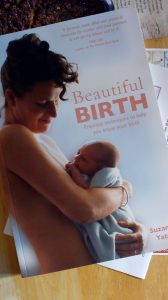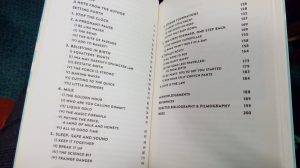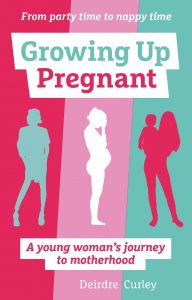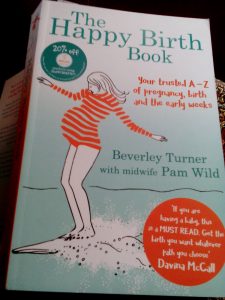It was that strange time of year between Christmas and New Years, my Wife Amanda had just hit 38 weeks so we decided it was time to get absolutely everything organised for our pending arrival, putting away the christmas decorations and getting all the clobber out we had bought for the baby. After relaxing in front the TV my wife called out my name from the downstairs toilet. Subconsciously thinking about the spider I had seen by the front door a few days prior, thinking I was going to rescue her from an Arachnid, I was met by a worried looking wife saying ‘I think my waters have just broken.’ My first thought was our baby had taken us getting organised as a hint we were ready for him/her to come out already! You could have had given me 100 guesses at that point and I would have not guessed that’s why she had called my name.
A quick call and trip to the Maternity block confirmed everything was starting to happen, then knowing we would be parents within the next 24 hours or so was very surreal indeed, I always knew it was going to happen at some stage but not right now! To this stage Mandy hadn’t really had major pains, just light period type of cramps; being a Brit I thought a cup of Tea would make things more comfortable, but by the time I got up to the bedroom contractions had already started. We tracked contractions via a mobile phone app and after 2 hours of contractions (1 less severe hour and 1 10/10 pain score hour), following directions from labor ward to stay at home until we’ve had 2 hours of severe contractions, I remembered a warm bath could be of comfort. As soon as my wife’s ass touched the water she said she felt like she needed to push. Trying to control the nervous wobble in my voice speaking to the triage midwife, remembering being told previously if my wife needs to push at home to call an ambulance, I was asked if I felt my wife could get up there in time, now the thought of a home birth scared the crap out of me tbh so I agreed to get up there sharpish! Walking back in the bathroom to tell Mand the plan, saw what I thought a leg hanging out which fortunately turned out to be a bit of blood and mucus I guess.
After a rapid 3am drive in –3° conditions perhaps ignoring the odd red light or 5, with Mandy hanging off the headrest and interior handle, really really wanting to push, we arrived outside maternity. Mand was wearing my dressing gown and her favorite K Swiss which she had always said she didn’t want to arrive looking like a scruff bag, I also smacked my head on the tailgate due to cold gas struts not fully opening the boot as quickly, I will admit to shouting a few choice phases, glad nobody else was outside as we looked a right pair turning up!
A quick assessment back in the same room as we were in 6 hours previously showed that Mand was 6 cms at this stage, and we were moved to a labor room where we discussed pain relief. Due to Mand having a phobia of vomiting and being concerned Entonox might cause Nausea we discussed all options and agreed to try gas and air with a few contractions to see how it felt. Well after a rather large contraction and Mandy nearly sucking the thing off the wall, she found out it wasn’t so bad but the urge to push was too great. After another ‘inspection’ she had gone from 6 to 10cm in about 30 minutes, although Mandy would admit to having a few cheeky pushes when being told not to! So around 03:30 she was told she could start pushing. Our Midwife, Katy was fantastic and once she had found a position Mand could push in comfortably, forgetting the Entonox and really really concentrating on breathing and relaxation techniques we had learnt about in our NCT classes, made for a very focused and controlled experience. Mand had her head buried in my chest for most of the contractions completely in a zone of breathing and pushing, meaning Katy would tell me what she needed to do and I would in turn communicate with Mand. Keeping breathing slow and controlled, and taking huge breaths to push with seemed to work extremely well and in between visualising walking the dogs, our wedding on the beach or other happy or memorable moments. I remember the guy coming in to visit us in session 5 of NCT saying you might feel like a spare part with doctors, Nurses etc coming in and out but that couldn’t have been further from the truth for us!
After a very quick 40 minutes, our beautiful, perfectly formed healthy Baby Boy was born, the emotion is unrivalled, unexplainable and certainly won’t fade with memory. Seeing my wife holding our son was simply the most emotional, surreal, beautiful thing I have ever experienced. Cutting the cord I was a little nervous as didn’t want to miss and cut his leg off. After having cuddles for a while, he was checked over and weighed, we dressed him together in absolute awe of how tiny our little guy was! On leaving the labour ward it seemed a little strange just to walk out, I will admit to being the type of person that puts the towels straight and leave the room/bed tidy in hotels but it looked like a scene out of the Saw movies, thanks you RBH cleaning staff! We spent a while on Marsh Ward which allowed a few visitors before heading home early evening to start our new lives together, which the first night pretty much went, check on the baby when he made a noise and check on the baby when he didn’t make a noise!




